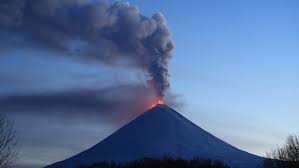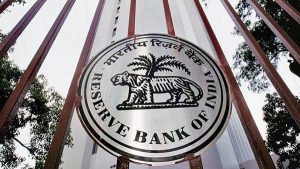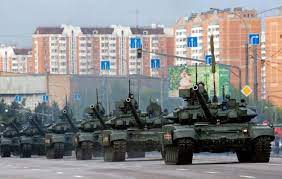Today’s Current Affairs: 9th Nov 2023 for UPSC IAS exams, State PSC exams, SSC CGL, State SSC, RRB, Railways, Banking Exam & IBPS, etc
Table of Contents
Krishi 24/7:

The Union Agriculture Ministry, in collaboration with the Wadhwani Institute for Artificial Intelligence (Wadhwani AI), developed Krishi 24/7.
- Krishi 24/7 is the first-ever AI-powered solution for automated agricultural news monitoring and analysis, with support from Google.org.
- The tool scans news articles in multiple languages and translates them into English.
- It extracts essential information from news articles, such as headline, crop name, event type, date, location, severity, summary, and source link, ensuring that the ministry receives timely updates on relevant events published on the web.
- It addresses the need for an efficient mechanism to identify and manage agricultural news articles of interest to aid timely decision-making.
- It will aid the Department of Agriculture and Farmers Welfare (DA&FW) to identify relevant news, generate timely alerts, and take prompt action to protect farmers’ interests and promote sustainable agricultural growth through improved decision-making.
Klyuchevskoy Volcano : Erupted

The Klyuchevskoy volcano erupted on Russia’s Kamchatka Peninsula.
- Klyuchevskoy volcano is one of the most famous volcanoes in
- It is one of the highest active volcanoes in the world, with a height of 4,750 metres.
- The volcano consists of a truncated cone with a central crater.
- It is a stratovolcano.
- It has erupted more than 50 times since 1700.
Kamchatka Peninsula:
- It lies in far eastern Russia, between the Sea of Okhotskon the west and the Pacific Ocean and Bering Sea on the east.
- It is one of the world’s most concentrated areas of geothermal activity, with about 30 active volcanoes.
- It is one of the largest peninsulas in the world.
- Climate:Severe, with prolonged, cold, and snowy winters and wet, cool summers.
- It is part of a vast belt of Earth known as the “Ring of Fire” which circles the Pacific Ocean and is prone to eruptions and frequent earthquakes.
New Guidelines On Information Technology Governance for Regulated Entities : RBI

The Reserve Bank of India (RBI) recently released final guidelines on information technology (IT) governance for regulated entities (REs) like banks, non-bank financial companies, credit information companies, and other financial entities.
- The REs have been mandated to put in place a robust IT governance framework to cover focus areas like strategic alignment, risk and resource management performance, and Business Continuity/Disaster Recovery Management.
- This framework should specify the governance structure and processes necessary to meet the RE’s business/strategic
- The framework will specify the roles (including authority) and responsibilities of the Board of Directors, board-level Committee, and Senior Management.
- It will also address the issue of adequate oversight mechanisms to ensure accountability and mitigation of IT and cyber/information security risks.
- The enterprise-wide risk management policy or operational risk management policy will incorporate periodic assessments of IT-related risks (both inherent and potential risks).
- The board of RE would approve the strategies and policies related to IT, Information Assets, Business Continuity, Information Security, and Cyber Security (including Incident Response and Recovery Management/Cyber Crisis Management).
- They should review such strategies and policies at least annually.
- The RE will establish a Board-level IT Strategy Committee (ITSC), which will comprise a minimum of three directors.
- Its chairman would be an independent director and carry substantial expertise in managing/guiding information technology initiatives.
- The ITSC should meet at least on a quarterly basis.
- The committee will ensure that the RE has put an effective IT strategic planning process in place and will guide in preparation of IT strategy and ensure that the IT strategy aligns with the overall strategy of the RE towards accomplishment of its business objectives.
- The guidelines mandate REs to establish an IT steering committee with representation at senior management level from IT and business functions.
- This committee will assist the ITSC in strategic IT planning, oversight of IT performance and aligning IT activities with business needs, and will oversee the processes put in place for business continuity and disaster recovery.
- It will also ensure implementation of a robust IT architecture meeting statutory and regulatory
- Every IT application, which can access or affect critical or sensitive information, shall have necessary audit and system logging capability and should provide audit trails.
- The audit trails shall satisfy a RE’s business requirements apart from regulatory and legal requirements.
- The audit trails must be detailed enough to facilitate the conduct of audit, serve as forensic evidence when required and assist in dispute resolution, including for non-repudiation purposes.
Russia Withdrew From Treaty Of Conventional Armed Forces In Europe:

Russia formally withdrew from the Treaty of Conventional Armed Forces in Europe (CFE) recently.
- Treaty of Conventional Armed Forces in Europe (CFE) Negotiated during the final years of the Cold War and signed a year after the fall of the Berlin Wall, CFE placed limits on the deployment of military equipment to maintain military balance between North Atlantic Treaty Organization (NATO) and the then-Warsaw Pact countries.
- Its purpose was to stop Cold War rivals from building up forces that could be used in a swift assault.
- Twenty-two member states of the two military alliances, NATO and the Warsaw Pact came together in Paris on November 19, 1990, to sign the agreement.
- It finally entered into force on November 9, 1992. The Warsaw Pact by this time had disintegrated, and its treaty obligations were consequently passed to the pact’s successor states.
- Specifically, the Treaty required NATO and Warsaw Pact states to have in total no more than 40,000 battle tanks, 60,000 armoured combat vehicles, 40,000 pieces of artillery, 13,600 combat aircraft, and 4,000 attack helicopters on the whole territory of the respective alliances.
- To reach these targets, the CFE state parties destroyed in subsequent years more than 50,000 weapons systems.
- These steps were supervised under a treaty compliance mechanism requiring information sharing and reciprocal inspections.
- Moreover, the scope of the treaty was soon widened to cover troop numbers. The 1992 follow-up agreement known as the CFE-1A arranged limits on the level of military personnel.
- Meeting at the Istanbul summit of the Organization for Security and Co-operation in Europe (OSCE), CFE Treaty partners finally agreed, on 19 November 1999, on an updated and modified arrangement: the Adapted CFE Treaty.
- A major change was that limitations on conventional weapon systems were no longer aligned to two “blocs” but to the territorial borders of individual states.
- Russia suspended its participation in the treaty in 2007 and halted active participation in 2015.
Geoglyph:

A geoglyph in the form of a circle said to be 3,000 years old has been recently unearthed on the outskirts of Mudichu Thalapalli in the Medchal-Malkajgiri district of Telangana.
- Geoglyph is a large design or motif (generally longer than 4 metres) produced on the ground and typically formed by clastic rocks or similarly durable elements of the landscape, such as stones, stone fragments, gravel, or earth.
- A geoglyph is created by arranging or moving objects within a landscape.
- There are two types of geoglyphs, namely positive and negative geoglyphs.
- It is formed by the arrangement and alignment of materials on the ground in a manner akin topetroforms (which are simply outlines created using boulders).
- It is formed by removing part of the natural ground surface to create differently coloured or textured ground in a manner akin to petroglyphs.
- There is another variation of a geoglyph that involves seeding plants in a special design. The design usually takes years to see since it depends on the plants growing. This type of geoglyph is called an arbour glyph.
- Another type of geoglyph often referred to as ‘chalk giants’ are those carved into hillsides, exposing the bedrock beneath.
Geoglyphs:
- From ancient times, the most widely known geoglyphs are the Nazca Lines of Peru, which have been a mystery to this day.
- Other geoglyphs from the past include the Megaliths in the Urals, the Uffington White Horse, the Long Man of Wilmington, and many others.
FIDE Grand Swiss Open 2023:

India celebrates as Vidit Santosh Gujrathi (FIDE Grand Swiss) and Vaishali Ramesh Babu (FIDE Women’s Grand Swiss) secure victories in the FIDE Grand Swiss Open, earning coveted spots in the 2024 Candidates Tournament for a chance to challenge the World Chess Champion.
- The World Chess Championship 2024 is scheduled to take place in Toronto, Canada in April 2024.
- The FIDE Grand Swiss Open is a chess tournament that is part of the qualification for the World Championship cycle.
- The FIDE Grand Swiss and FIDE Women’s Grand Swiss 2023 was held at the Villa Marina, Douglas, Isle of Man.
- The top two players in the open event will qualify for the 2024 Candidates Tournament, which will determine the challenger for the World Champion.
- The total prize fund is USD 600,000, with USD 460,000 for the Grand Swiss and USD 140,000 for the Women’s Grand Swiss.
- The first Grand Swiss was held in 2019 in the Isle of Man.
International Chess Federation (FIDE):
- It is the governing body of the sport of chess, and it regulates all international chess competitions.
- It’s constituted as a non-governmental institution. It organizes the World Chess Championship.
- It was recognized by the International Olympic Committee as a Global Sporting Organization in 1999.
Legal Literacy And Legal Awareness Program:

As per the recent data, the Legal Literacy and legal Awareness Program (LLLAP) has reached more than 6 lakh people through 14 implementing agencies under the Designing Innovative Solutions for Holistic Access to Justice (DISHA) scheme.
- LLLAP is an initiative by the Department of Justice, Ministry of Law and Justice, Government of India aimed at increasing legal literacy and awareness among the masses.
- The program seeks to educate people about their legal rights, duties, and entitlements, as well as the various legal mechanisms available for seeking redressal of grievances.
- DISHA is launched for a period of five years 2021-2026 to advance the cause of access to justice.
- It aims to design and consolidate various initiatives to provide citizen- centric delivery of legal services.
- Under DISHA, the programmes being implemented at a pan India level are Tele-Law: Reaching the Unreached, Nyaya Bandhu (Pro Bono Legal Services) and Legal Literacy and Legal Awareness Programme.
Women For Water, Water For Women Campaign:

The “Women for Water, Water for Women Campaign” launched by the Ministry of Housing and Urban Affairs aims to empower women in water governance.
- Under it, women will visit water treatment plants to learn about water treatment processes and quality testing protocols.
- The campaign focuses on instilling a sense of ownership among women towards water infrastructure, with over 15,000 Self Help Groups (SHG) women participating.
- It promotes inclusivity, and gender equality, and aims to enhance women’s role in ensuring access to safe drinking water for their households.
- The campaign is part of the Atal Mission for Rejuvenation and Urban Transformation (AMRUT) and has the potential to create positive community impact and serve as a model for future initiatives.
Climate Services Report For 2023 : World Meteorological Organization

The World Meteorological Organization (WMO) report (Climate Services report for 2023) reveals that the health sector is ill-equipped to address heat and extreme weather impacts.
Major findings of the report:
- Climate change threatens to undo decades of health progress, with less than 25% of global health ministries using climate information to monitor climate-related health risks.
- Despite air pollution being the fourth-largest health risk factor, only 2% of international climate finance is allocated to address it.
- However, climate finance has doubled, averaging $1.3 trillion annually in 2021 and 2022.
WMO :
- HQ: Geneva; founded: 1950
- It is an intergovernmental organization and a specialised agency of the UN, dedicated to international cooperation and coordination on the state and behaviour of Earth’s atmosphere, weather and climate, and distribution of water resources.
- It has 193 members (including India)
Amazon’s Foray Into Advanced AI With “Olympus”:

Amazon is investing heavily in an advanced large language model (LLM) called “Olympus.”
- This model is reported to have 2 trillion parameters, potentially outstripping OpenAI’s GPT-4, which has one trillion.
- Details of the project have been kept under wraps, with sources discussing it under anonymity.
- Amazon has not made an official statement following the information leak.
- Amazon has developed smaller models such as Titan and has collaborations with AI startups like Anthropic and AI21 Labs.
- These partnerships extend the reach of Amazon’s AI capabilities to AWS users.
- By developing in-house LLMs, Amazon aims to enhance AWS offerings.
- The move could attract enterprise clients seeking access to top-tier AI models on AWS.
- LLMs are designed to process vast datasets and generate responses akin to human interaction.
- The training of larger models incurs high costs due to the significant computing power involved.




